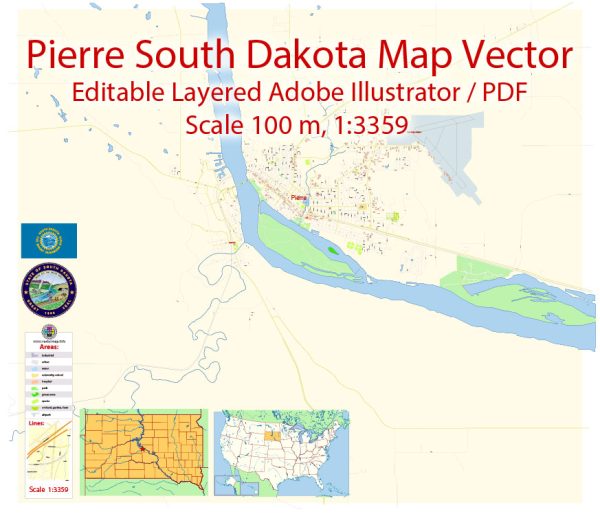Pierre, the capital city of South Dakota, has a rich history of urban development that reflects the broader historical trends of the region and the state. Here is an overview of the key aspects of Pierre’s urban development:
- Early Settlement and Fur Trade (Late 18th to Early 19th Century): The area around present-day Pierre was initially inhabited by Native American tribes, including the Lakota Sioux. European fur traders and explorers began to arrive in the late 18th century, establishing a presence in the region. The fur trade played a significant role in the early economic activities.
- Fort Pierre and the Military Presence (19th Century): Fort Pierre, established in 1832 by the American Fur Company, became a focal point for trade and military activities. The military presence in the area contributed to the development of a more permanent settlement. The establishment of Fort Pierre Chouteau in 1855 further solidified the city’s role as a trading center.
- Railroads and Statehood (Late 19th Century): The arrival of the railroad in the late 19th century played a pivotal role in the development of Pierre. The Chicago and North Western Railway reached Pierre in 1880, facilitating transportation and trade. The city’s strategic location on the Missouri River also contributed to its growth. South Dakota achieved statehood in 1889, and Pierre was chosen as the state capital.
- Capitol Construction and Economic Growth (Late 19th to Early 20th Century): The construction of the South Dakota State Capitol building began in 1905 and was completed in 1910. This significant infrastructure project provided jobs and stimulated economic growth. The Capitol remains a prominent landmark in Pierre today. During this period, the city continued to develop as a political, administrative, and commercial center.
- Economic Diversification and Modernization (20th Century): Throughout the 20th century, Pierre experienced economic diversification beyond its role as a government center. Agriculture, tourism, and services became important contributors to the local economy. The city continued to modernize its infrastructure, including schools, hospitals, and transportation networks.
- Population Growth and Contemporary Development (Late 20th Century to Present): Pierre’s population has steadily grown over the years, reflecting both natural population increase and in-migration. The city has focused on maintaining its small-town charm while accommodating modern amenities and services. Water recreation on the Missouri River, along with tourism and outdoor activities, contributes to the local economy.
- Cultural and Recreational Development: Pierre boasts cultural institutions, parks, and recreational facilities. The Oahe Dam, completed in the early 1960s, created Lake Oahe, providing water resources and recreational opportunities. The South Dakota Cultural Heritage Center and the South Dakota Discovery Center are notable cultural institutions in the city.
In summary, Pierre’s urban development is deeply intertwined with the history of South Dakota, from its early days as a trading post to its current status as the state capital and a hub for government, commerce, and culture. The city has evolved through various economic phases, maintaining its historical roots while adapting to the changing needs of its residents and visitors.


 Author: Kirill Shrayber, Ph.D.
Author: Kirill Shrayber, Ph.D.